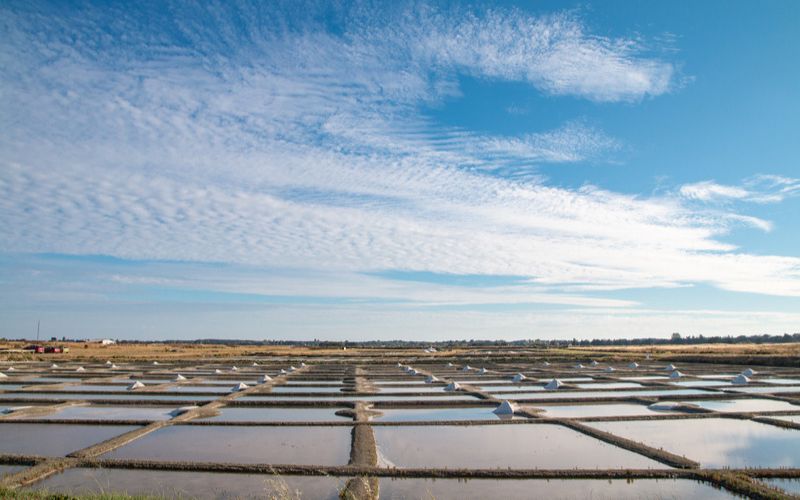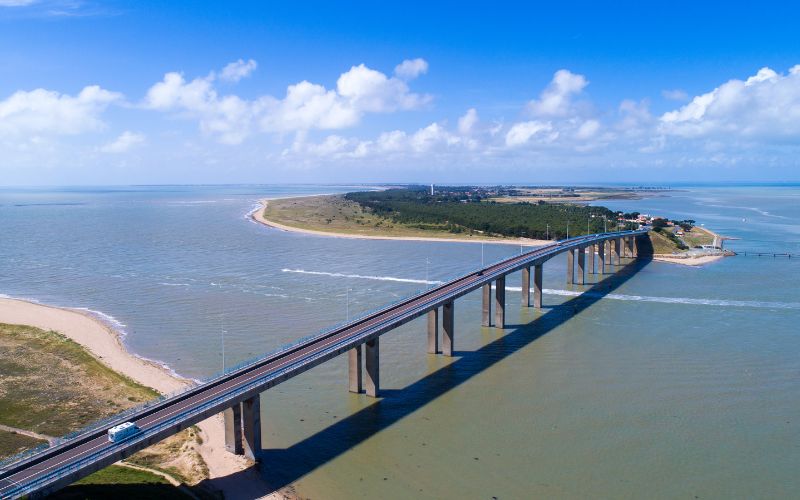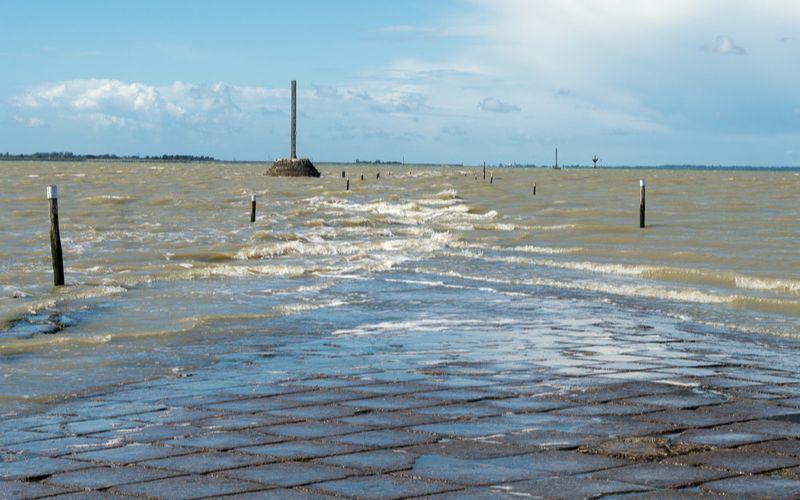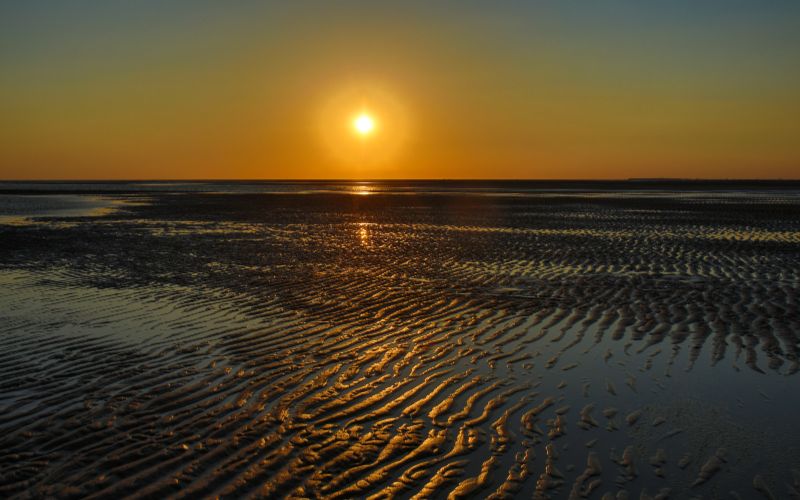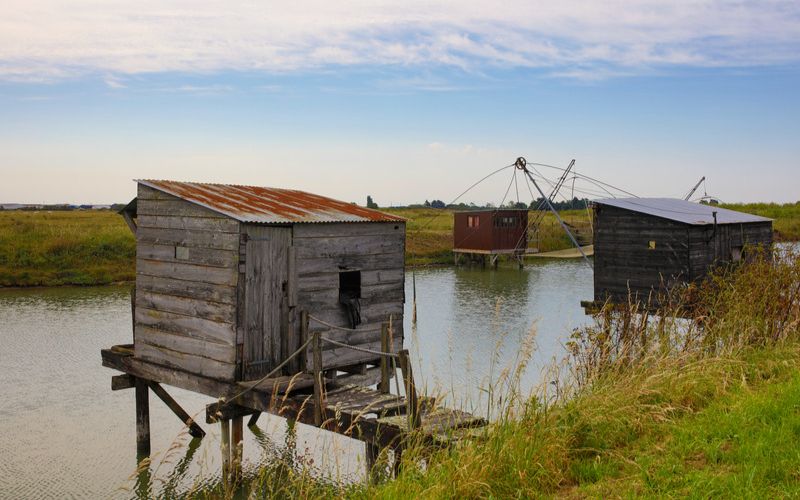The Island of Noirmoutier
The Island Noirmoutier
40 kilometers of beach
Le bois de la Chaize
Various natural reserves.
THE ISLAND OF NOIRMOUTIER
It is connected to the mainland by a submersible causeway called the Gois and, since 1971, by a bridge. Its length is approximately 18 km.
The island is often nicknamed the “mimosa island” for its mild climate allowing mimosa trees to grow and bloom in winter. You will find a lot of salt marshes, dunes, and forests of evergreen oaks on this island.
NATURAL RESERVE THE MARSHES OF MULLEMBOURG
The 48 hectares of the Müllembourg marshes, reclaimed from the sea in the past century, are a refuge for numerous animal and plant species. The poldering work that created these marshes at the beginning of the 19th century was commissioned by Jean-Cornil Jacobsen. The protection of the area is ensured by the Jacobsen dike, built from 1810 to 1813 by over 300 workers. In addition to creating salt marshes, this dike allowed ships to sail up to the port in adverse winds. At the end of the Jacobsen jetty, there is the Larron fort from the 16th century which defended the entrance to the port. These marshes are a refuge for birdlife due to their richness in food. As for the flora, 160 species are counted.
NOIRMOUTIER CASTLE-MUSEUM
Built at the end of the 12th century, this medieval castle, one of the best preserved in the Grand-Ouest region, houses a museum. The latest restorations (2006-2008) reveal the transformations of this watchtower into a lordly residence. Thanks to its dominant position on the island, the dungeon offers the most remarkable panorama. The Noirmoutier castle is classified as a historical monument and its museum is labeled as a Museum of France.
LE BOIS DE LA CHAIZE
From north to south, facing the vast Atlantic ocean, there are only sand dunes, fine sandy beaches, and peaceful coves lined with towering pine trees. The forests are a source of pride for the island, particularly the well-known Bois de la Chaize. Its fame is partly due to its forest of evergreen oaks, maritime pines, and strawberry trees, but most of all to the mimosas that bloom there in the winter, creating a breathtaking spectacle that has contributed to the island’s renown.
In the last century, it formed the nucleus of a seaside resort where only a few holiday homes were built. Today, this part of the island, nestled in lush greenery, is certainly where the most beautiful homes in Noirmoutier are located. Villas built at the end of the 19th century, mostly owned by the bourgeoisie of Nantes, display their sophisticated roofs, bright colors, and intricate facades. An ancient seaside art form still persists here, which is difficult to find elsewhere on the coast. Also worth seeing are the Plage des Dames, Anse Rouge, and Les Souzeaux.
L’ÎLE AUX PAPILLONS
Discover the life cycle of butterflies and witness their birth in the hatchery: that’s what “L’Ile aux Papillons” offers you! In the heart of France’s largest aviary, maintained at 26°C, you will walk among hundreds of exotic butterflies flying freely among tropical plants and flowers. Several hundred butterflies of around sixty different varieties from all over the world (Madagascar, Kenya, Madagascar, Philippines…) evolve in a greenhouse with a reconstituted tropical climate (humidity levels between 70% and 90%).
A documentary film retraces the stages of transformation in the life of a butterfly, from the egg, caterpillar, and chrysalis to finally become a butterfly. You can also observe these stages at the entrance of the greenhouse, in the hatchery – a kind of nursery – and see the most beautiful specimens that have lived in the aviary, whose shapes and colors rival each other in originality.
HERBAUDIÈRE PORT
At the end of the 19th century, a creek was developed and over time gave birth to the Herbaudière port, today the only deep-water port on the island, specialized in fishing for conger eel, sea bass, and cuttlefish. A large marina has been added to it. The marine cemetery, behind the church, offers an interesting viewpoint. One can see offshore the Pilier island where two lighthouses and a fort built by the people of Nantes in 1710 to protect themselves from Norman raids.
THE NATURE RESERVE OF POLDER DE SÉBASTOPOL
The Polder de Sébastopol has been classified as a regional nature reserve since 2008. Located north of the Gois passage in Barbâtre, it is 4 km long and 600 m wide, offering 132 hectares of pure nature. A protected site and a true refuge for a large number of animals, birds, insects, and plants that flourish there, the Polder de Sébastopol is a world that deserves to be discovered thanks to a 3.2 km circuit. The Polder de Sébastopol was built using the Dutch polder technique. The work was completed in 1856.
The last polder built on the island, it owes its name to the famous Battle of Sébastopol won in 1855 by Franco-British troops during the Crimean War. In 1978, the poorly maintained dike gave way under the pressure of the waves, and a large part of the polder was flooded. The soil soaked with salt prohibited any cultivation for several years. The District of the Île de Noirmoutier acquired the polder in 1986 and launched a vast program of restoration, soil remodeling, and preservation of its ecosystem.

